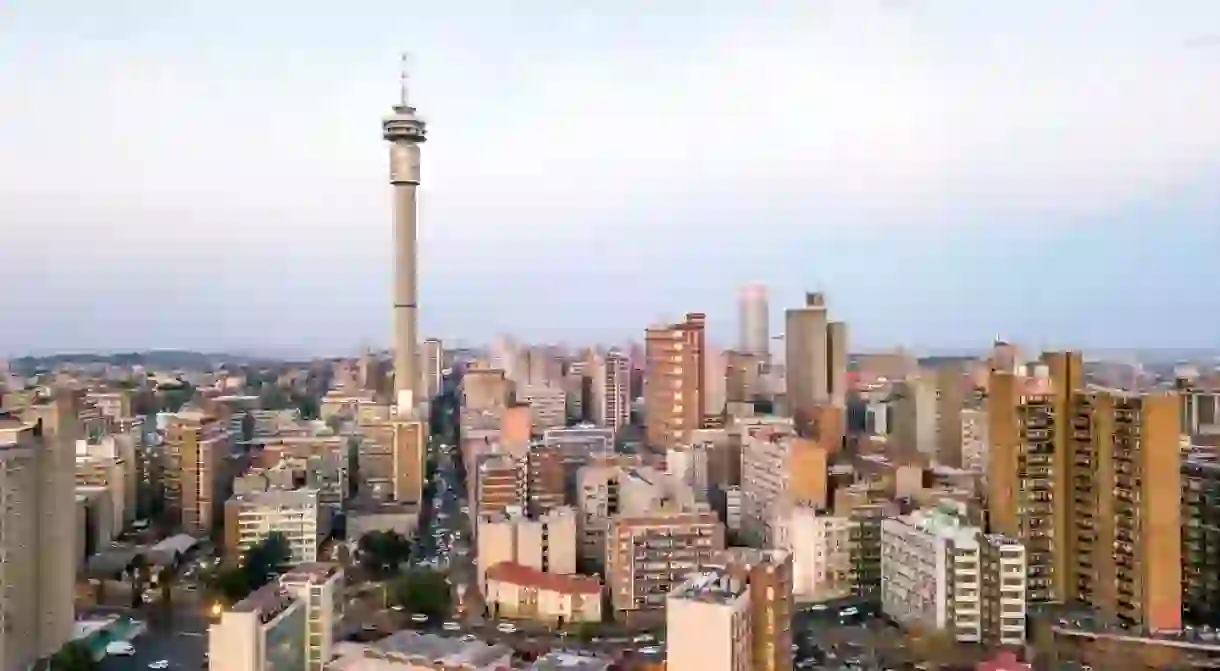The 8 Best Things to See and Do in Johannesburg, South Africa

Johannesburg is South Africa’s biggest city and the cultural and economic capital of Africa. Commonly referred to as “Joburg” or “Jozi”, it draws everyone from history lovers and movers and shakers to tree huggers (after all, it has the world’s largest urban forest). This handy Culture Trip guide takes a look at some of the best things to see and do that guarantee an unforgettable time in the City of Gold.
Johannesburg has the world’s largest urban forest, is the wealthiest city on the continent and home to the tallest building in Africa. Thanks to steady economic growth over the past decade, it has been enjoying something of a renaissance. Living in the shadow of its coastal, mountainous and affluent neighbour, Cape Town, it was a city once considered too chaotic, sprawling and unsafe, but the one thing it’s always had over Mother City is real heart.
Once derelict warehouses are now trendy art galleries, markets and bohemian apartments. Johannesburg also offers one of the continent’s most diverse food scenes. And its dedication to preserving the memories of the struggle heroes who transformed the country into what it is today is unparalleled in South Africa. Johannesburg is a forward-thinking, multicultural and well-integrated hub for young professionals, creatives and visionaries, and it has plenty on offer year-round.
Pro Tip: Johannesburg is relatively easy to navigate, with the Gautrain and its affiliate buses providing direct links to suburbs Sandton and Rosebank, as well as to OR Tambo International Airport, Pretoria and Ekurhuleni. Visitors can buy Gautrain Gold Cards from any Gautrain station. Alternatively, contactless bank cards can be used on the trains. Uber, minivan taxis and private taxis are also available for hire.
Get lost in the Sub-Saharan Africa's largest art gallery
Art Gallery, Museum

Try the flavours of the city at Neighbourgoods Market
Market
Wander along Soweto's Vilakazi Street
Architectural Landmark
Short for “South Western Township”, Soweto was an entirely separate municipality from the City of Johannesburg until 2002. During apartheid – which ended in 1994 – it was the largest city in South Africa to have a population made up entirely of black Africans. Today, it’s the country’s oldest township, has been the epicentre for many important turning points throughout South Africa’s history and was the location for the 2010 FIFA World Cup’s final match and closing ceremony. The most famous place in Soweto is Vilakazi Street – the only street in the world to have housed two Nobel Peace Prize winners, Nelson Mandela and Archbishop Emeritus Desmond Tutu. Mandela’s former abode is now a museum, and Archbishop Tutu still resides in his Soweto home. Named after the first black African to teach at the University of Witwatersrand (one of the continent’s most prestigious academic institutions) and who helped in the production of the isiZulu dictionary, Vilakazi Street is also the location of the Hector Pieterson Memorial and Museum. The rest of the street is much like any other in Soweto, a stark reminder that the giants of South African democracy came from the most ordinary of places.
Discover Johannesburg's creative hub, Maboneng
Architectural Landmark
Discover our human ancestors and play with lion cubs at the Cradle of Humankind
Historical Landmark

The Cradle of Humankind is internationally recognised as the place where humankind began. Discovered in 1924, the first-ever hominid fossil, Australopithecus africanus, is on display here at the Maropeng Visitor Centre. It’s a Unesco World Heritage site with 13 excavation sites and is a 40-minute drive from Johannesburg’s city centre. The Sterkfontein Caves, which is home of the longest continuing palaeoanthropological dig in the world, are also located in the area. Notable finds include the pre-human skull dubbed “Mrs Ples”, and a near-complete hominid skeleton called “Little Foot”. Note that both sites, although on the same road, are situated 10km (6mi) apart.Also situated within the World Heritage site reserve is the Lion and Safari Park, a 1,000ha (2,471-acre) animal sanctuary where visitors can sign up for a guided game drive or traverse the park in their vehicle. Cheetah and lion walks depart twice daily; alternatively, play with lion cubs and feed giraffes, ostriches and antelope in this waterside paradise.
Immerse yourself in South Africa's struggle history
Museum
Take a rollercoaster ride through an old gold mine
Amusement Park, Casino

Learn about the rise and fall of apartheid
Museum
This is an updated version of a story created by Corlena Bailey.













